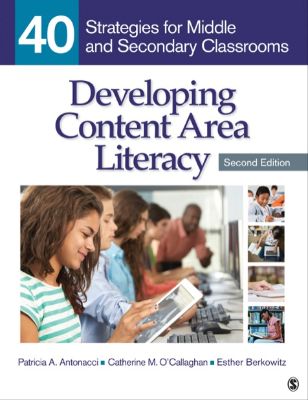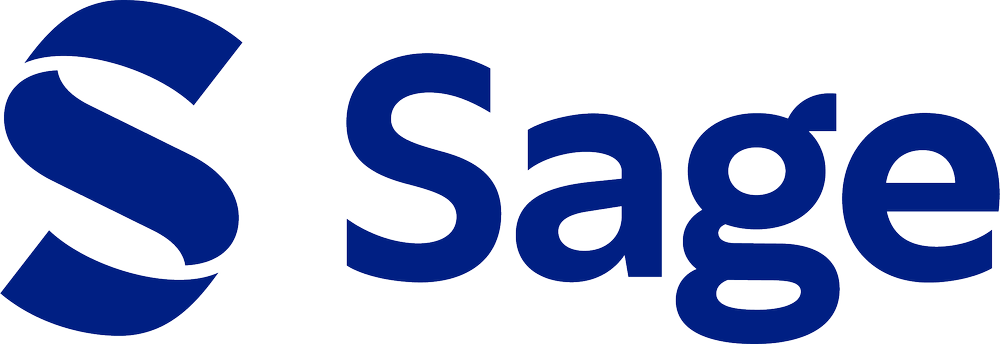Developing Content Area Literacy

Lýsing:
Forty evidenced-based strategies for integrating literacy instruction into the content areas Providing unique content on assessment, differentiated instruction, technology, and reflective practice, Developing Content Area Literacy, Second Edition is designed to help busy middle school and secondary teachers meet the challenge of addressing the literacy learning needs of all students, including English language learners.
Each of the 40 evidence-based strategies is organized around eight essential areas of literacy instruction: academic vocabulary, reading fluency, narrative text, informational text, media and digital literacies, informational writing, critical thinking, and independent learning. Each topic has five strategies from which to choose, giving teachers ample variety to meet the diverse needs of the classroom.
Annað
- Höfundar: Patricia A. Antonacci, Catherine M. O’Callaghan, Esther Berkowitz
- Útgáfa:2
- Útgáfudagur: 2014-10-30
- Blaðsíður: 352
- Hægt að prenta út 2 bls.
- Hægt að afrita 2 bls.
- Format:ePub
- ISBN 13: 9781483347653
- Print ISBN: 9781483347646
- ISBN 10: 1483347656
Efnisyfirlit
- Cover Page
- Halftitle
- Dedication
- Title
- Copyright
- Contents
- Preface
- Acknowledgments
- Common Core Anchor Standards for Reading
- Section I: Academic Vocabulary: Developing Vocabulary for Learning in Content Areas
- 1 Semantic Mapping: Developing Robust Academic Vocabularies
- 2 Vocabulary Self-Collection Strategy: Promoting Word Consciousness
- 3 Contextual Redefinition: Using Clues as a Word-Learning Strategy
- 4 Semantic Feature Analysis: Comparing and Contrasting Features of Words
- 5 Blogging Academic Vocabulary: Integrating Subject-Matter Discourse Into Media
- Section II: Reading Fluency: Developing Deep-Reading Fluency
- 6 Readers Theatre: Increasing Fluency Through Student Engagement With Text
- 7 Paired Reading: A Collaborative Approach for Developing Deep-Reading Fluency
- 8 Audiobooks: Modeling and Scaffolding Reading Fluency
- 9 Radio Reading: An Authentic Approach for Developing Reading Fluency
- 10 Morphemic Analysis: A Useful Resource for Becoming a Fluent Reader
- Section III: Developing Close Reading of Text: Essential Strategies for Teaching Close Reading
- 11 Annotation: Strategic Analysis of Text
- 12 Interactive Think-Alouds: Collaborative Interpretation of Text
- 13 Inference Strategy Guide: Facilitating Reading Between the Lines
- 14 The Inquirer Strategy: Learning to Ask Questions
- 15 Active Interpretation of Film: Making Inferences Through Visual Media
- Section IV: Reading Informational Text: Developing Comprehension for Informational Text
- 16 Questioning the Author: Constructing Meaning From the Text
- 17 Text Structure Strategy: Using Graphic Organizers to Learn From Informational Text
- 18 Connect to It: Making Personal, Text, and World Connections to Text
- 19 Inquiry Charts: Organizing Information for Learning From Texts
- 20 Digital Pattern Folders: Comprehending Multimodal Texts
- Section V: Media and Digital Literacies: Developing Comprehension for Media and Digital Literacies
- 21 Think and Check: Contextualizing and Corroborating Online Information
- 22 Digital Storytelling: Creating Digital Text
- 23 Wikibooks: Collaborative Research Projects
- 24 Podcasting: Merging Media for Understanding
- 25 Book Trailers: Insights and Discoveries About Texts
- Section VI: Critical Thinking: Developing Students’ Critical Thinking Skills
- 26 SCAMPER: Collaborative Analysis of Text
- 27 Six Thinking Hats: Facilitating Different Modes of Thinking
- 28 Academic Controversy: Taking Sides on the Issue
- 29 Three-Level Reading Guide: Developing Literal, Interpretive, and Applied Reading of Text
- 30 Request Reciprocal Teaching: Collaborative Critical Thinking
- Section VII: Writing Informational Text: Developing Writing in the Content Areas
- 31 Concept Star: Visualization for a Prewriting Strategy
- 32 Concept Mind Map: Facilitating Collaborative Writing
- 33 Research for Choice: Facilitating Student Voice in Academic Writing
- 34 Shared Pen: Interactive and Collaborative Writing
- 35 Targeted Text: Guided Writing of Informational Text
- Section VIII. Independent Learning Strategies: Promoting Strategies for Independence in Learning
- 36 Talking Around the Text: Using Dialogic Reading and Writing to Promote Independent Learners
- 37 Textbook Activity Guide: Developing Independence in Learning From the Textbook
- 38 Academic Note Taking: Supporting Students’ Independence in Learning
- 39 Entrance and Exit Slips: Helping Students to Reflect on Their Learning
- 40 Journaling: Helping Students to Respond, Reflect, and Learn Through Informal Writing
- Index
- About the Authors
- Advertisement
UM RAFBÆKUR Á HEIMKAUP.IS
Bókahillan þín er þitt svæði og þar eru bækurnar þínar geymdar. Þú kemst í bókahilluna þína hvar og hvenær sem er í tölvu eða snjalltæki. Einfalt og þægilegt!Rafbók til eignar
Rafbók til eignar þarf að hlaða niður á þau tæki sem þú vilt nota innan eins árs frá því bókin er keypt.
Þú kemst í bækurnar hvar sem er
Þú getur nálgast allar raf(skóla)bækurnar þínar á einu augabragði, hvar og hvenær sem er í bókahillunni þinni. Engin taska, enginn kyndill og ekkert vesen (hvað þá yfirvigt).
Auðvelt að fletta og leita
Þú getur flakkað milli síðna og kafla eins og þér hentar best og farið beint í ákveðna kafla úr efnisyfirlitinu. Í leitinni finnur þú orð, kafla eða síður í einum smelli.
Glósur og yfirstrikanir
Þú getur auðkennt textabrot með mismunandi litum og skrifað glósur að vild í rafbókina. Þú getur jafnvel séð glósur og yfirstrikanir hjá bekkjarsystkinum og kennara ef þeir leyfa það. Allt á einum stað.
Hvað viltu sjá? / Þú ræður hvernig síðan lítur út
Þú lagar síðuna að þínum þörfum. Stækkaðu eða minnkaðu myndir og texta með multi-level zoom til að sjá síðuna eins og þér hentar best í þínu námi.
Fleiri góðir kostir
- Þú getur prentað síður úr bókinni (innan þeirra marka sem útgefandinn setur)
- Möguleiki á tengingu við annað stafrænt og gagnvirkt efni, svo sem myndbönd eða spurningar úr efninu
- Auðvelt að afrita og líma efni/texta fyrir t.d. heimaverkefni eða ritgerðir
- Styður tækni sem hjálpar nemendum með sjón- eða heyrnarskerðingu
- Gerð : 208
- Höfundur : 12618
- Útgáfuár : 2014
- Leyfi : 380


